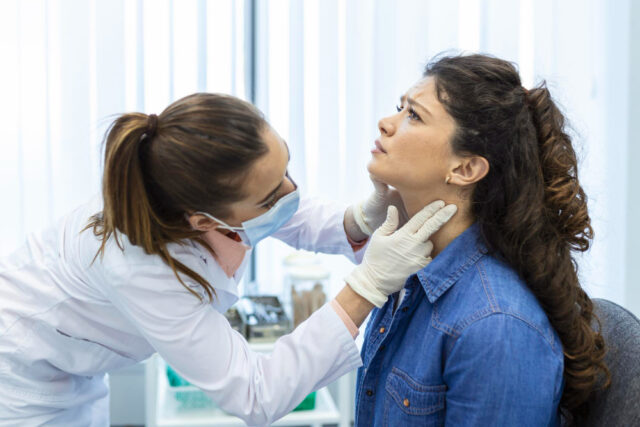
Voice disorders disrupt daily communication and quality of life, especially for individuals who rely heavily on their voice in professional or social settings. The traditional path to diagnosis has often involved hospital-based procedures, which are time-consuming, costly, and can delay critical treatment. Nevertheless, Dr Scott Saffold and ENT professionals are increasingly adopting in-office laryngeal biopsies as a more efficient, accessible, and patient-friendly alternative.
These biopsies allow for quick and accurate diagnosis without the need for sedation or operating room scheduling. As this trend gains traction, it’s transforming how voice disorders are managed, enabling earlier detection and intervention. With the latest advancements in medical tools and techniques, in-office biopsies are setting a new standard for vocal health care, benefiting both patients and providers alike.
Voice Disorders and Diagnostic Needs
Voice disorders can affect people of all ages, often interfering with daily communication. Symptoms like persistent hoarseness, vocal strain, pitch changes, or a weak voice may suggest underlying issues with the vocal cords or laryngeal structures. These symptoms can be temporary or signal more serious conditions that need medical evaluation.
Accurate diagnosis plays a key role in determining effective treatment. Teachers, singers, public speakers, and others who rely heavily on their voice may face career disruptions without proper care. Quick identification of the underlying condition can make a significant difference in recovery and long-term vocal health.
Many voice issues are overlooked or misdiagnosed when not evaluated thoroughly. As the demand grows for more precise and timely testing, medical professionals are turning to newer methods that offer efficiency without sacrificing accuracy.
Traditional Biopsy Methods and Their Limitations
Traditionally, diagnosing voice disorders often meant scheduling a hospital-based biopsy under general anesthesia. These procedures typically require an operating room, specialized equipment, and a team of medical staff, making the process both time-consuming and costly. Patients would often wait days or even weeks for scheduling and biopsy results, delaying treatment decisions.
In addition to the logistical challenges, traditional laryngeal biopsies can be physically demanding for patients. The need for sedation or intubation introduces added risks, especially for those with underlying health conditions. These factors have led clinicians to seek safer, more efficient alternatives that still deliver diagnostic accuracy. Some patients also report anxiety surrounding hospital settings, which can further complicate the diagnostic process.
How In-Office Laryngeal Biopsies Work
In-office laryngeal biopsies are performed during a routine visit using a flexible laryngoscope—an instrument that allows the doctor to view the vocal cords while the patient remains awake and seated. A small tissue sample can be collected using precision tools, all under local anesthesia. The entire process typically takes less than thirty minutes.
Unlike traditional methods, this approach doesn’t require a hospital stay or recovery from sedation. Patients often resume normal activities shortly afterward, making it a more accessible option for those with busy schedules or limited mobility. As this technique becomes more common, it is reshaping how voice-related conditions are diagnosed and managed. With minimal recovery time and lower procedural risk, the appeal of in-office biopsies continues to grow among patients and providers.
Key Advantages for Patients and Providers
In-office laryngeal biopsies offer a quicker path to diagnosis, allowing treatment plans to begin without the delays typical of hospital-based procedures. Early detection is especially valuable in distinguishing between benign and potentially malignant vocal fold lesions, which can impact outcomes. Timeliness is critical, particularly in oncologic cases where early treatment offers the best prognosis.
Patients often appreciate the convenience and reduced stress of avoiding surgery centers or general anesthesia. The streamlined nature of the procedure also lowers healthcare costs, benefiting both individuals and providers. Many clinics now integrate this method into routine ENT evaluations, making advanced care more widely available. This shift also helps reduce the burden on hospital surgical suites, freeing up resources for more complex cases.
Clinical Applications and Patient Candidacy
These biopsies play a vital role in determining the best course of action for a range of voice disorders. Whether the concern is a suspected polyp, chronic inflammation, or an unusual growth, obtaining a tissue sample helps clarify the diagnosis and guides the next steps in care. In many cases, it eliminates the need for exploratory surgery. Patients with recurring vocal issues often benefit from this targeted approach.
Though widely beneficial, not all patients are ideal candidates. Those with severe gag reflexes, anatomical challenges, or complex airway issues may still require traditional approaches. ENT specialists assess each case individually, weighing safety, comfort, and the likelihood of obtaining a conclusive sample. Personalized evaluation ensures that each patient receives the most appropriate and effective diagnostic planning.
The Future of Voice Disorder Diagnosis
As more ENT clinics adopt in-office biopsy techniques, the standard of care is changing. What once required hospital admission is now achievable in a physician’s office with minimal disruption to the patient’s routine. This shift is not only improving access but also encouraging earlier intervention, which is often key in preserving voice quality.
With advancements in visualization tools and biopsy instrumentation, the accuracy and ease of these procedures continue to improve. Training programs are beginning to reflect this change, preparing the next generation of laryngologists to rely less on the operating room and more on efficient, patient-centered diagnostics.
Disclaimer
The information contained in South Florida Reporter is for general information purposes only.
The South Florida Reporter assumes no responsibility for errors or omissions in the contents of the Service.
In no event shall the South Florida Reporter be liable for any special, direct, indirect, consequential, or incidental damages or any damages whatsoever, whether in an action of contract, negligence or other tort, arising out of or in connection with the use of the Service or the contents of the Service. The Company reserves the right to make additions, deletions, or modifications to the contents of the Service at any time without prior notice.
The Company does not warrant that the Service is free of viruses or other harmful components












